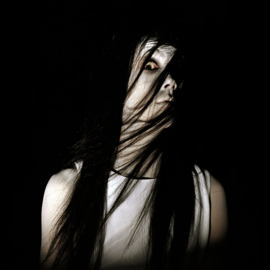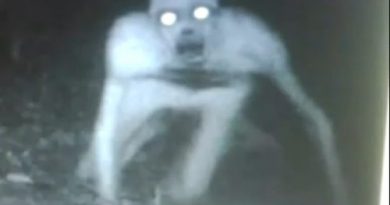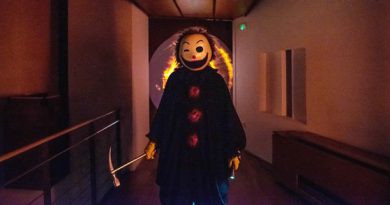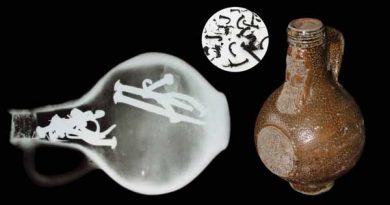Top 5 Scariest Ghosts from Japan – Unexplained Mysteries
Source : http://wikipedia.com
Traditional Japanese beliefs state that every human being has a soul called reikon. After death, the reikon exits the body and enters a state of purgatory, where it awaits the body’s funeral and final rites. If completed properly, the reikon becomes satisfied and meets peace and becomes a protector of the family from which it came. However, if a person dies an unnatural death or the final rites aren’t properly conducted, the reikon becomes a yurei, or dim spirit. The yurei anguishes in purgatory wondering why someone just can’t bury the damn body already. If the yurei develops strong enough emotional attachments to the physical world, it returns as a ghost.
In Japanese mythology there are many types of such spirits. These scariest Japanese ghosts are not only common in Japanese folklore but also closely resemble Western ideas of what a restless spirit is.
Onryo
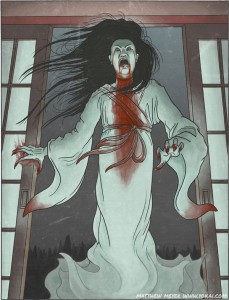
HABITAT: found all throughout Japan
DIET: none; survives solely on its wrath
APPEARANCE: The most dreaded type of yurei is the onryo. They are the ghosts of people who died with such strong passions –jealousy, rage, or hatred – that their soul is unable to pass on, and instead transforms into a powerful wrathful spirit who seeks vengeance on any and everything it encounters. Onryō appear as they did when they died. Often they were victims of war, catastrophe, betrayal, murder, or suicide, and they usually display wounds or marks indicative of the way they died.
INTERACTIONS: Their motive is always the same: vengeance. Onryo are easily powerful enough to swiftly kill any person; however, they prefer letting the object of their hatred live a long life of torment and suffering, watching those he knows suffer and die. They inflict a terrible curse on the people or places that they haunt. This curse can be transmitted to others through contact like a contagious disease, creating a circle of death or destruction that is far more devastating than any ordinary ghost. They make no distinction in whom they target with their grudge; they just wants to destroy. Moreover, this vengeance can never be satisfied as it can for most ghosts. While most yūrei only haunt a person or place until they are exorcised or placated, an onryo’s horrible grudge-curse continues to infect a location long after the ghost itself has been laid to rest.
Occasionally, an onryo’s curse is born not out of hatred and retribution, but out of intense, passionate love which perverts into extreme jealousy. These onryō haunt their former lovers, exacting their wrath onto new romances, second marriages, their children, and eventual end up destroying the lives of the ones they loved so much in life. Whatever the origin, the onryō’s undiscriminating wrath makes it one of the most feared supernatural entities in all of Japan.
LEGENDS: Unquestionably the most well-known onryo, and one whose grudge-curse exists to this very day, is the ghost of Oiwa: a young woman who was brutally disfigured and then murdered by her wicked and greedy husband in an elaborate plot. Her story is told in Yotsuya Kaidan, The Ghost Story of Yotsuya, and has been retold many times, in books, ukiyo-e, kabuki, and film. Like with Shakespeare’s Hamlet, legend has it that a curse accompanies her story, and that those who retell it will suffer injuries and even death. To this day, producers, actors, and their crews continue to visit the grave of Oiwa in Tokyo before productions or adaptations of Yotsuya Kaidan, praying for her soul and asking for her blessing to tell her story once again.
Goryo
In medieval Japan, it was a common belief that one’s social status carried over with them into the spirit world. The more powerful someone was, the more likely it would make them a ghost capable of great destruction, so continuing to respect the dead was very important. Of course, if some douche-hat assassinated you for political gain, it didn’t really matter if a shrine was built in your honor because you were going to be pretty pissed off regardless.
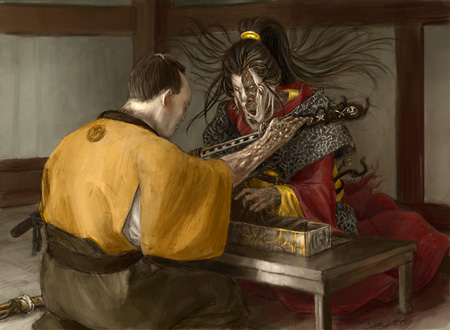
Ubume
TRANSLATION: woman in late pregnancy; often written with different characters
ALTERNATE NAMES: obo, unme, ugume, ubametori, and many others
HABITAT: haunts the area where she gave birth
DIET: none; only exists to deliver her baby into safe hands
APPEARANCE: When a woman dies just before, during, or shortly after childbirth, her spirit is often unable to pass on out of anxiety for her child. This troubled attachment manifests into a ghost known as an ubume. They appear on dark, rainy nights, and are often indistinguishable from a living woman carrying a child, crying for help. Ubume can appear in many forms: a woman carrying a baby, a pregnant woman, or a blood-soaked walking corpse carrying an underdeveloped fetus. Other times they just appear as horrific, bloody, naked pregnant women crying out desperately into the night for help.
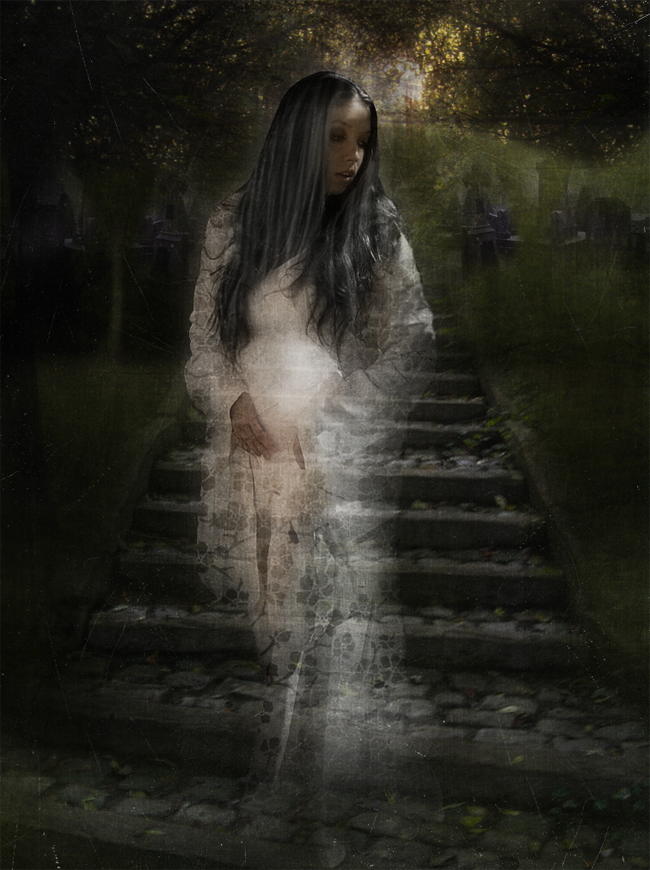
BEHAVIOR: These tragic spirits wander the areas near where they died, seeking aid from the living which they cannot provide themselves. If the mother died after childbirth but her baby survives, an ubume will try to provide for the child in whatever way it can. She enters shops or homes to try to purchase food, clothes, or sweets for her still-living child. In place of money she pays with handfuls of dead leaves. These ghosts also often try to lead humans to the place where the baby is hidden so that it can be taken to its living relatives, or adopted by another person.
In cases where both mother and child died, an ubume can appear carrying the bundled corpse of her infant. When a human approaches, the ghost tries to deliver the bundle into the arms of the living. If the stranger accepts the bundle, the ghost vanishes, and the bundle grows heavier and heavier until the helpful stranger is crushed under its weight.
OTHER FORMS: The name ubume is written with characters that imply a bird’s name. The literal translation of these characters is “child-snatching bird” and some theories connect this spirit with another yokai called the ubumetori. This yokai is an evil bird which flies through the sky searching for clothing that has been left on the clothesline overnight. When it finds some, it smears its poisonous blood on the clothing, and shortly afterward the owner of those clothes begins to develop shakes convulsions, possibly leading to death. They are also blamed for snatching babies and taking them away into the night sky. Whether this bird is another form of the ubume or a separate spirit with the same name is not known.
Zashiki-warashi
TRANSLATION: zashiki child
ALTERNATE NAMES: many, depending in the region and variety of ghost
HABITAT: zashiki (a kind of sitting room covered in tatami mats) and other rooms
DIET: none, but enjoys candies and treats left out for it
APPEARANCE: Zashiki-warashi are house spirits, fond of mischief, loved by all, and believed to bring great fortune and riches to those whose houses it haunts. They appear as ghost-like five or six year old children with blushing red faces. They can be boys or girls, and usually wear tradition clothes; child-sized warrior costumes for boys, patterned kimonos, with short, bobbed, or long, tied back hair for girls. Rarely they appear as wild, hairy brutish figures. Often it is difficult to make out any details other than a vague child-like shape. Direct sightings of these ghosts are rare. In some instances it is said that only the houses owners, or only children, are able to see these spirits. Because of this, they are usually known only by their pranks.
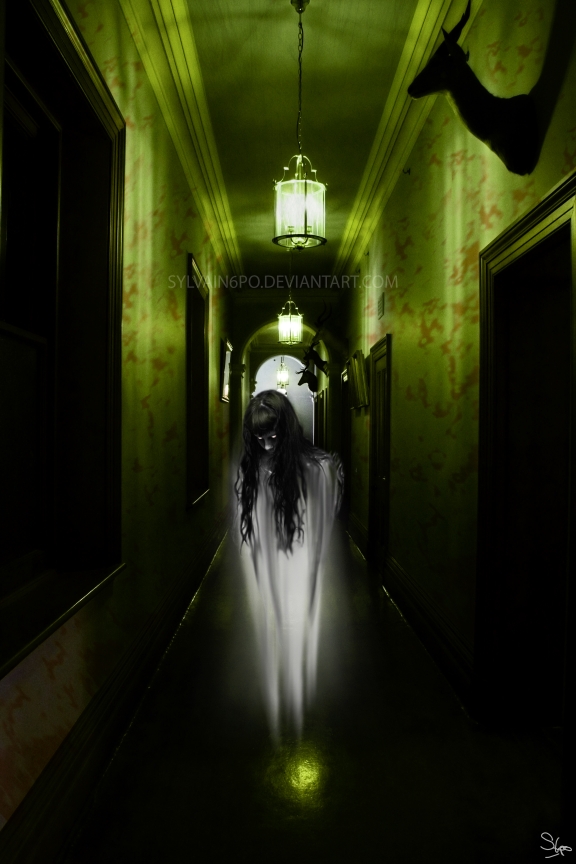
INTERACTIONS: Zashiki-warashi are considered guardian spirits of the house, and gods of luck. It is said that a house with a Zashiki-warashi will prosper and grow rich, and a house that drives away such a spirit will fall into decline and ruin. In one account, a family witnessed a zashiki-warashi leaving from their home, and soon they all succumbed to food poisoning and died. In another well-known legend from Iwate, a wealthy mans son shot a zashiki-warashi with a bow and arrow, and soon after the familys fortunes collapsed.
In many homes, these spirits befriend the children of the house, teaching them songs, games, and nursery rhymes. They keep elderly or infertile couples company, and these couples often treat the zashiki-warashi as if it were their own child. The desire to attract and keep these friendly yokai has led to customs like setting food out in the zashiki for them, and even laying coins in the foundation when building a new house. The Japanese take great care to maintain their zashiki, so as not to drive out any guardian spirits dwelling there.
OTHER FORMS: Their common name comes from the zashiki, the formal reception room for guests in a Japanese house where they most often reside. They are known by many different names in other areas, such as kura-bokko (“warehouse child”) and makura-gaeshi (“pillow turner”). Countless variations of zashiki-warashi exist from place to place, with minor difference in their appearance and habits.
Funayurei
Funayurei are ghosts believed to use hishaku (ladles) to fill boats with water and make them sink. They are said to be the remnants of people who have died in shipwrecks and are attempting to cause humans to join them. According to legends, there are various methods that can be used to protect from the harm they inflict, such as throwing onigiri into the sea or preparing a hishaku with its bottom missing. They are also called mōjabune, bōko, or ayakashi depending on the area. Umibozu, another strange phenomenon at sea, are sometimes considered to be a type of funayūrei rather a type of yokai.
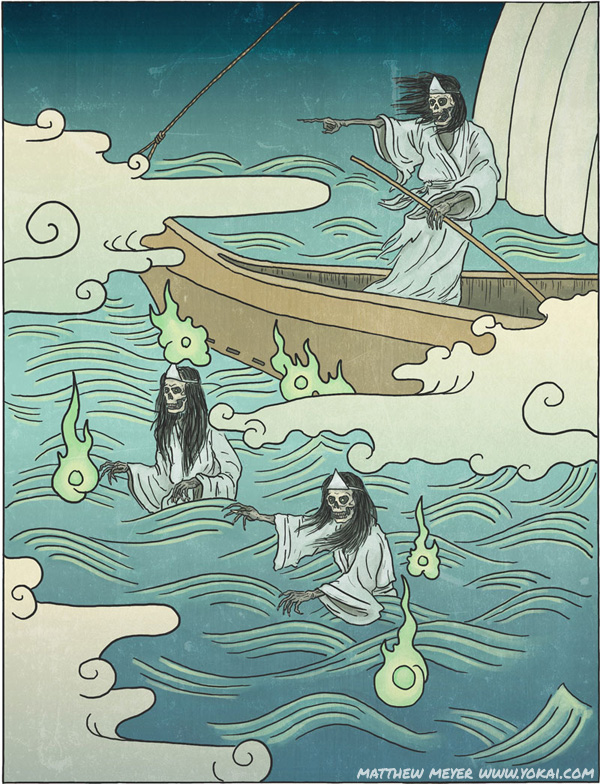
They often appear in rainy days, as well as nights on a new or full moon, and on stormy nights and foggy nights. When it appears as a boat, the funayūrei itself glows with light, so that it is possible to confirm its details even at night. Also, by operating on the sixteenth day of bon, the dead would attempt to approach the side of the ship and sink the ship. Also, on a very foggy evening, by making the boat attempt to run, a cliff or a boat without a pulley would appear, and since getting startled and attempting to avoid it would result in capsizing and getting stranded on a reef, it would be no problem to simply push on forward, making it disappear naturally.
Other than attempting to sink ships, in the town of Otsuki, Hata District Kochi Prefecture, they are said to make the boat’s compass malfunction, and in the Toyoma Prefecture, fishing boats that travel to Hokkaido get turned into a funayurei, causing the crew to hang themselves. In Ehime Prefecture, when one encounters a funayurei, if one tries to avoid it by changing the boat’s route, the boat runs aground. Also, in the past, to avoid shipwreck on a day of bad weather, people would light a bonfire on land, but a funayurei would light a fire on open sea and mislead the boatmen, and by approaching the fire, one would get eaten by the sea and drown.
There are also various legends about how to drive away funayurei depending on the area, and in the Miyagi Prefecture, when a funayurei appears, they would disappear if one stops the ship and stares fixedly at the funayurei for a while. It is also told that it is good to stir up the water with a stick. There are also various theories that it would be good to throw things into the sea, and in Kōzu-shima, it would be flowers and incense, incense sticks, dango, washed rice, and water, in Kochi Prefecture, it would be ashes and 49 rice cakes, and in Otsuki, Kochi, it would be summer beans, in Nagasaki Prefecture, it would be woven mats, ashes, and burnt firewood. Also, in Kochi Prefecture, it is said to be possible to drive funayurei by saying “I am Dozaemon and asserting to be one of the funayurei. In Ehime, one is able to disperse the funayurei by lighting a match and throwing it.
